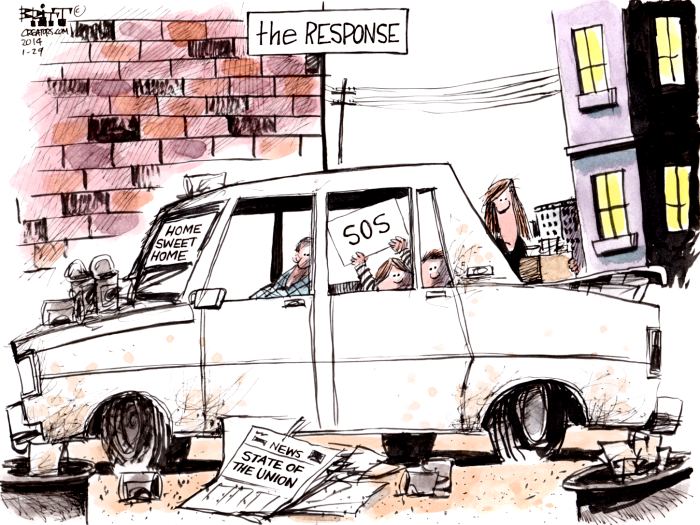It’s Rich vs Poor, but the downtrodden wealthy are finally getting some help!
[This page is an excerpt from the Humor Times magazine.
The monthly publication is available in print or digital formats, all over the world.]
Get the FREE News in Cartoons Humor Times app for more funny news stories like this!
It’s rich vs poor, as income inequality gets more lopsided…
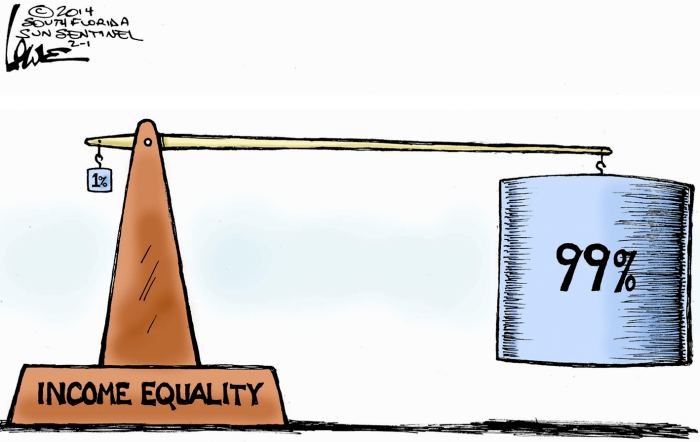
so there’s a long way to go.

The state of the union is shabby…
and it’s hard to put a positive spin on it.
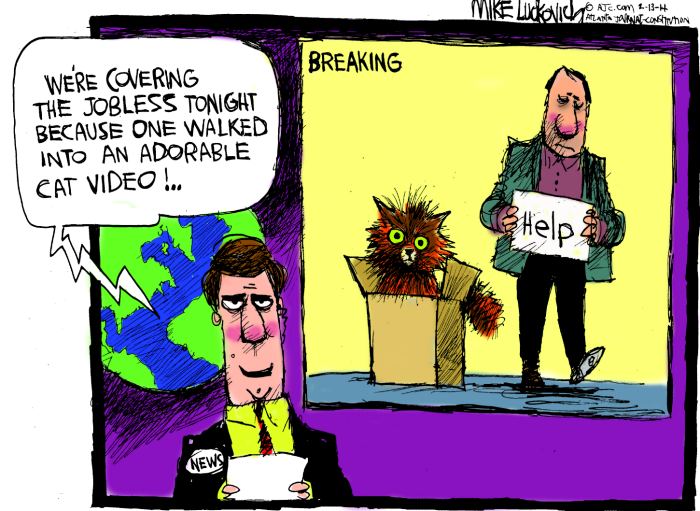
Wall Street continues to play fast and loose…

because they are still just too big to fail.

Meanwhile, debt ceiling freezers felt the squeeze…
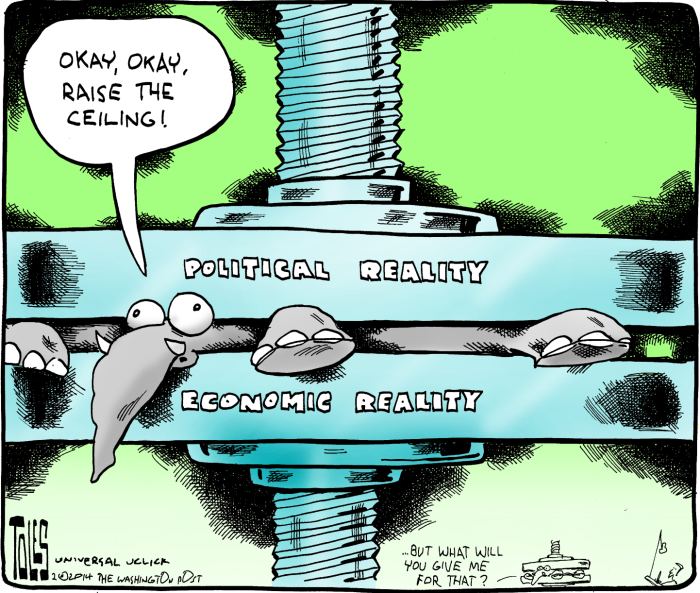
as are ma & pa farms.
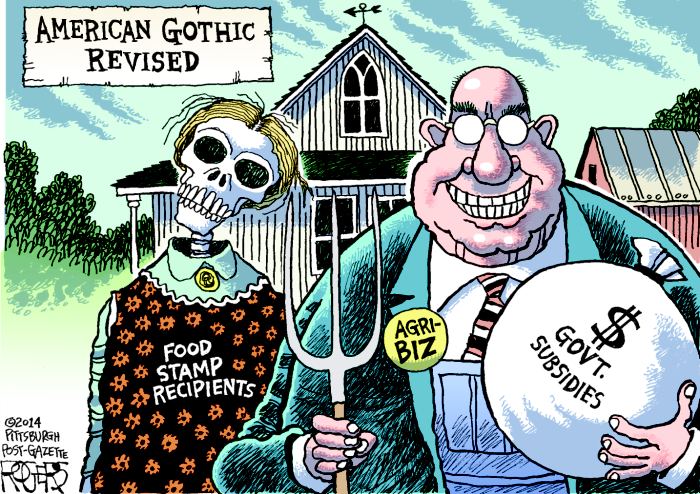
See more in our “News in Cartoons” series here. To check out more of our great collection of professional cartoonists, visit our Political Cartoons sampler, our political Cartoon Galleries, non-political panel cartoons and our International Political Cartoons sampler. If you’d like to try your hand at captioning cartoons, check our Cartoon Caption Contest. Enjoy, and please use the share buttons below. Thank you!
Wikipedia on rich vs poor:
Wealth inequality in the United States (also known as the wealth gap or rich vs poor) refers to the unequal distribution of assets among residents of the United States. Wealth includes the values of homes, automobiles, personal valuables, businesses, savings, and investments. Just prior to President Obama’s 2014 State of the Union Address, media reported that the top wealthiest 1% possess 40% of the nation’s wealth; the bottom 80% own 7%. The gap between the top 10% and the middle class is over 1,000%; that increases another 1000% for the top 1%. The average employee “needs to work more than a month to earn what the CEO earns in one hour.” Although different from income inequality, the two are related. In Inequality for All—a 2013 documentary with Robert Reich in which he argued that income inequality is the defining issue for the United States—Reich states that 95% of economic gains went to the top 1% net worth (HNWI) since 2009 when the recovery allegedly started.
A 2011 study found that US citizens across the political spectrum dramatically underestimate the current US wealth inequality and would prefer a far more egalitarian distribution of wealth.
Wealth is usually not used for daily expenditures or factored into household budgets, but combined with income it comprises the family’s total opportunity “to secure a desired stature and standard of living, or pass their class status along to one’s children.” Moreover, “wealth provides for both short- and long-term financial security, bestows social prestige, and contributes to political power, and can be used to produce more wealth.” Hence, wealth possesses a psychological element that awards people the feeling of agency, or the ability to act. The accumulation of wealth grants more options and eliminates restrictions about how one can live life. Dennis Gilbert asserts that the standard of living of the working and middle classes is dependent upon income and wages, while the rich tend to rely on wealth, distinguishing them from the vast majority of Americans. Rich vs poor, indeed.
Latest posts by Editorial Cartoons (see all)
- Kim Jung Un, Movie Critic – An Exclusive HT Cartoon News Report! - January 23, 2015
- Them That Has, and Them That Don’t: Rich vs Poor – An Exclusive HT Cartoon News Report! - March 7, 2014
- Polar Vortex-Gate: An Exclusive Humor Times Cartoon Report! - January 21, 2014

